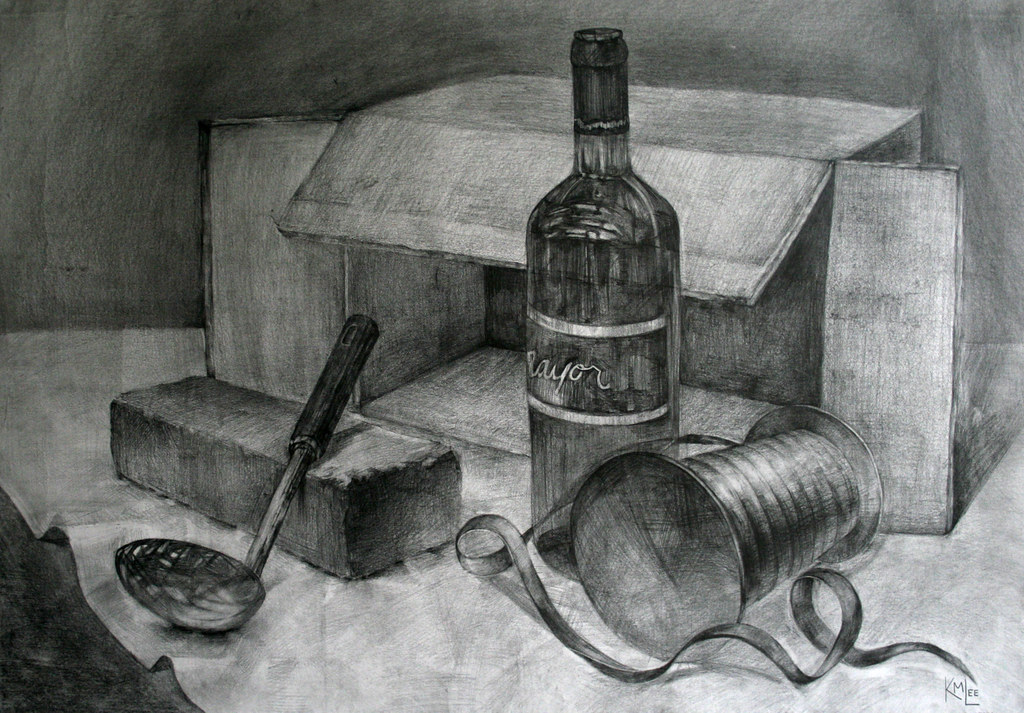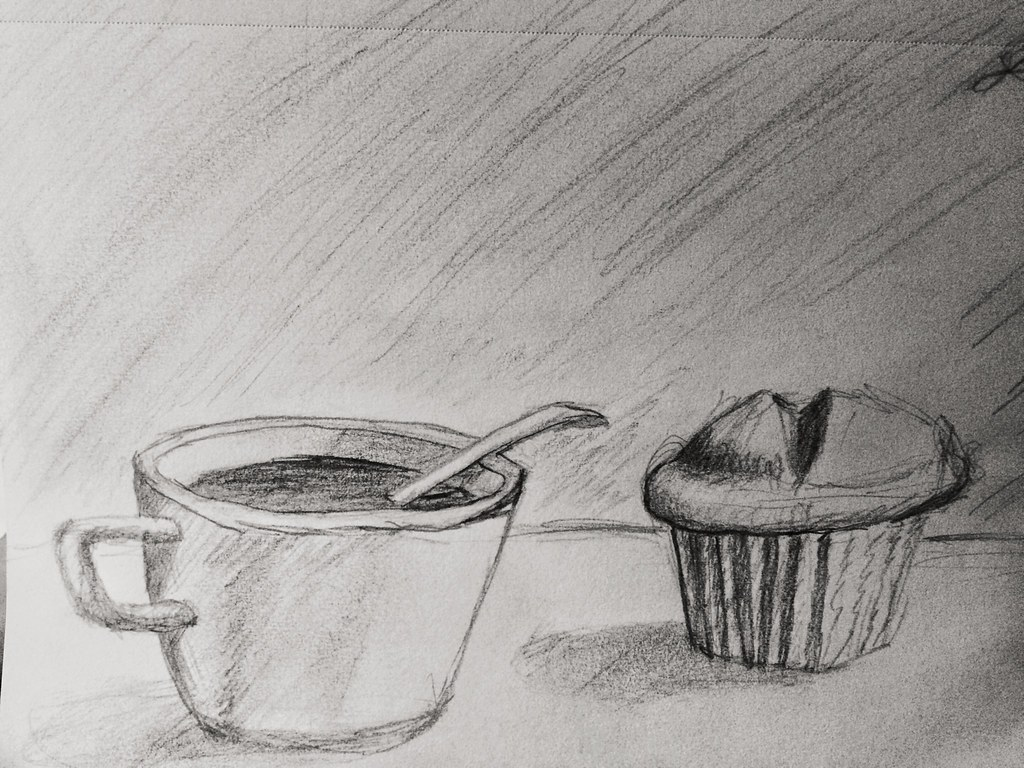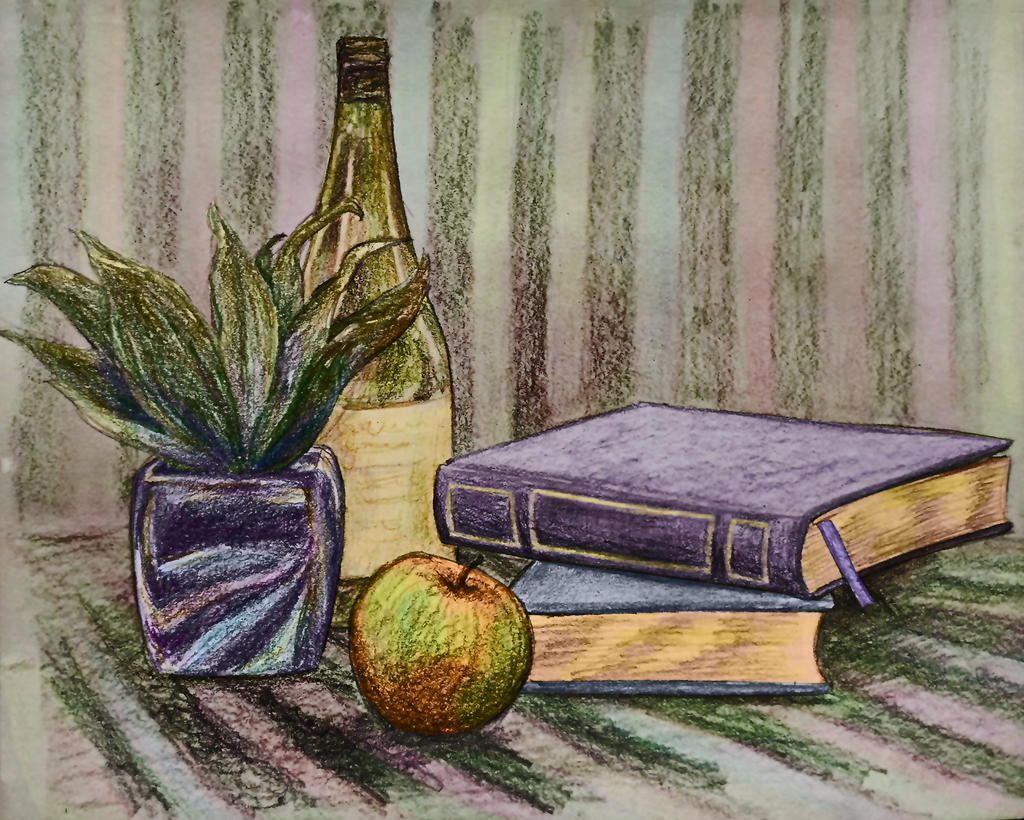Credit: xycolsen on DeviantArt
Welcome to our step-by-step Drawing Tutorial designed to help you brush up on your skills by immersing yourself in the time-honored practice of still life sketching. Whether you are a beginner or an experienced artist looking to improve, this guide offers helpful tips and strategies for enhancing observation skills, mastering composition, and rendering various textures and objects. So, grab your sketchpad and let’s get started!
Understanding the Basics of Still Life Drawing
Getting a grasp of still life drawing is like learning the ABCs of the art world. It’s about bringing to life an assortment of inanimate objects that are meticulously arranged. From a collection of your favorite books to an array of colorful fruits or even everyday items like kitchen utensils, the possibilities are endless.
The aim of still life drawing is not just to reproduce what’s in front of you but to also capture the ambiance, the way the light dances on the objects, and how shadows carve out form and depth. This form of art compels us to observe the world in a way we usually overlook, teaching us to see the extraordinary in the ordinary.
It’s about focusing on the minute details: the unique texture of a peeling apple, the delicate fold of a cloth, or the intricate patterns on a ceramic vase. Through the process, you build a deep understanding of different materials and their interaction with light, a skill that is vital in all forms of drawing.
Remember, the beauty of still life lies in its simplicity and accessibility. It’s a form of art that is available to anyone and can be done anywhere. You don’t need an exotic landscape or a live model, just a few ordinary items that are right in front of you. So, gather a few interesting objects, arrange them in a visually appealing way, and let your creative journey begin!
Creator: UNIS Hanoi
The Value of Still Life Studies for Observational Skills
When it comes to honing your observational skills, still life studies serve as a powerful tool. As you delve deeper into this form of art, you’ll find yourself becoming more attuned to the intricate details of your surroundings.
The play of light and shadow on objects, the variation in textures, the depth and dimensions added by shadows – these are all subtle nuances that still life studies help you recognize and appreciate.
This meticulous attention to detail isn’t limited to your still life sketches, but rather, permeates into all your artistic endeavors. Consequently, your ability to produce realistic and captivating images in your artwork significantly improves. This focus on observation in still life studies not only elevates your art but also enriches your daily life, allowing you to see and appreciate the beauty in the seemingly mundane.
So as you engage in still life drawing, remember that each sketch is an opportunity to sharpen your observation skills and transform the way you perceive the world around you.
Mastering the Art of Composition Through Still Life
In the world of art, composition is king and still life drawing is your trusty steed to conquer this realm. When setting up your own still life, you’re in charge of arranging every object. This empowers you to explore artistic principles like the rule of thirds, or strategically balancing elements to create harmony. You can experiment with different configurations and see how altering the placement of objects changes the visual impact.
Consider using lines or shapes within your arrangement to subtly direct the viewer’s eye through the artwork. Try positioning an object along an imaginary line dividing your paper into thirds, or arrange items in a way that creates a sense of movement or balance. The aim is to guide the viewer’s gaze around the artwork in a way that’s pleasing to the eye.
As you continue your still life studies, you’ll find these principles gradually embedding themselves into your artistic intuition. Over time, your composition skills will blossom, enhancing the overall impact and attractiveness of your artwork. The beauty of mastering composition through still life is that these principles apply to all forms of art, making this practice a valuable addition to your artistic toolkit. With each still life sketch, you’re not just creating a piece of art, you’re also honing a skill that will enrich all your future artistic endeavors. Happy sketching!
Creator: Howard J
Rendering Different Textures and Objects in Still Life
One of the exciting aspects of still life drawing is the opportunity to capture a myriad of textures and objects. It’s like creating a tactile experience on paper. Whether you’re rendering the rough, intricate surface of a sea shell or the velvety skin of a ripe peach, each object presents a unique challenge and learning experience.
To begin, experiment with various shading techniques. Hatching, or making parallel lines, can give the illusion of a rough or textured surface. On the other hand, smooth shading techniques can be used to depict glossy or smooth surfaces. As you practice, you’ll start to discover the nuances of each technique and how to best use them to recreate the textures you see.
Observing and capturing these details will not only make your still life drawings more realistic, but it will also enrich your overall drawing skills. Don’t be afraid to experiment and try out different techniques. Remember, it’s through practice and exploration that you’ll discover your unique style and approach. Enjoy the journey!
Tips for Getting Started with Still Life Drawing
Diving into still life drawing? Great! Here are some friendly pointers to get your artistic journey off to a solid start. Your first task is to gather an array of items that intrigue you. Look for a diverse mix in terms of shapes, sizes, and textures. Maybe it’s a knobbly gourd, a glossy apple, or a feathered quill. The beauty of still life is that you can literally draw from life’s vast array – the world is your oyster.
Next, arrange your chosen items in a way that appeals to your eye. Don’t rush this process. Play around with different arrangements until you find one that strikes a balance and stirs your interest. Remember, you’re the composer of this visual symphony.
Once you’ve nailed down your composition, begin with a rough sketch. This is your blueprint, a roadmap of where you’re headed. Capture the essential shapes first, without diving into the nitty-gritty details. This is not the stage for perfection, but for laying down the broad strokes.
Take a moment to study the light source in your composition. How does it illuminate your objects? Where does it cast shadows? This will greatly impact your drawing, so it’s crucial to get a good grasp of it early on.
As you venture into the world of still life drawing, remember: it’s all about exploration and enjoyment. So take your time, keep your senses open, and savor the process. Each sketch is a step forward in your artistic journey. Happy drawing!
Credit: Barnes Foundation via Picryl.com
Practice Makes Perfect: Incorporating Still Life Studies into Your Routine
Embarking on the journey of still life drawing is an exciting venture that can significantly elevate your artistic prowess. To truly soak in the benefits of this classic form of art, it’s essential to make it a regular part of your routine. Try setting aside a little time each day to sketch a simple still life. It doesn’t have to be an elaborate setup; even a single object can serve as an engaging study.
As you consistently engage in this practice, you’ll find your observational skills becoming sharper, your understanding of composition deepening, and your ability to depict various textures growing more sophisticated. While daily practice may seem daunting, remember that even a quick ten-minute sketch can make a noticeable difference over time.
This practice not only improves your still life sketching but also elevates your overall drawing skills. With every stroke of your pencil, you’re not just creating a piece of art, you’re also building skills that will serve you in every artistic endeavor. Enjoy the process, be patient with yourself, and watch as your artistic journey unfolds with each still life sketch.
Credit: YarnWolf on DeviantArt
Exploring the Deeper Meanings and Symbolism in Still Life
Beyond its role as a technique-building exercise, still life also carries the potential for profound symbolism and personal expression. Throughout art history, still life pieces have often been imbued with underlying messages or reflections on the transience of life.
Even simple, everyday items can hold deeper meanings. An hourglass could symbolize the relentless march of time, while an overripe fruit might speak to the inevitability of decay. So, as you advance in your still life journey, don’t hesitate to delve into these layers of symbolism.
Use your still life arrangements to weave stories, express emotions, or communicate ideas. Remember, your still life drawings are not just technical exercises, but also a canvas for your personal narratives and reflections.
So go ahead and let your artwork speak volumes, adding another fascinating dimension to your still life studies.












0 Comments